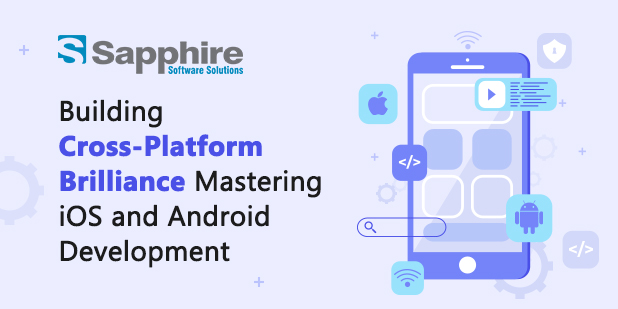I remember when I first encountered microservices five years ago during a project overhaul. Our monolithic application had become unwieldy, and deployment was a nightmare for our team. We needed a change.
Microservices architecture emerged as our solution—a design approach that splits applications into small, independently deployable services. Each service handles a specific business capability and can be developed and scaled on its own terms. Unlike the monolithic approach where everything is interconnected, microservices offer flexibility that many modern businesses desperately need.
What struck me most during our transition was how teams could suddenly work in parallel without stepping on each other’s toes. The front-end developers weren’t blocked waiting for backend changes, and our DevOps folks could deploy critical fixes without rebuilding the entire application. This autonomy makes microservices particularly valuable for organizations undertaking digital transformation or building cloud-native applications.
The journey isn’t always smooth—there’s complexity in managing service communication and ensuring data consistency. But for growing applications that need agility, the benefits often outweigh these challenges.
Ultimate Guide to Microservices Architecture in Java:
Java has been my primary language for implementing microservices, and for good reason. The ecosystem around microservices architecture Java implementations has matured considerably over the past decade. When I talk with other developers about why they choose Java for microservices, three factors consistently come up:
First, the Spring ecosystem. Spring Boot has revolutionized Java development by eliminating boilerplate code and offering production-ready features out of the box. I’ve found Spring Cloud components particularly useful—service discovery through Eureka, configuration management with Config Server, and circuit breaking with Resilience4j have saved my team countless hours of custom development.
Second, Java’s stability and performance. Despite newer languages gaining popularity, Java’s JVM provides reliable performance characteristics that matter when you’re running hundreds of microservices in production. The JIT compiler optimizations and garbage collection improvements in recent versions have made Java even more attractive for high-throughput services.
Third, the community support is unmatched. When I’ve encountered obscure integration issues, chances are someone else has already solved them and documented the solution on Stack Overflow or GitHub. This collective knowledge has been invaluable during critical production issues.
The transition from monolithic Java applications to microservices architecture Java implementations does require a mental shift. Services communicate through well-defined APIs rather than direct method calls, and state management becomes more distributed. But frameworks like Spring Boot make these transitions more manageable with built-in support for RESTful services, messaging, and database interactions.
I’ve implemented microservices for financial institutions where transaction integrity was paramount, and the Java ecosystem provided the reliability we needed. Similarly, many large-scale eCommerce platforms run on Java microservices to handle variable traffic patterns efficiently.

Comparing Microservices Architecture .NET vs Java:
During my consulting work, clients often ask me to help them choose between microservices architecture .NET and Java. Both platforms have evolved significantly to support modern microservices patterns, but they have different strengths that might make one more suitable depending on your context.
Java’s platform independence remains one of its biggest advantages. I’ve deployed Java microservices across Linux, Windows, and containerized environments without modification. The Spring ecosystem offers a comprehensive toolkit that handles everything from dependency injection to cloud configuration. Java’s stability makes it particularly well-suited for long-running services where memory management is critical.
On the other hand, .NET has made remarkable strides with .NET Core (now .NET 5+). Microsoft’s investment in making microservice architecture Azure implementations seamless has paid off. During a recent project, I was impressed by how easily we integrated Azure Functions with other Azure services for a truly cloud-native implementation.
.NET benefits from excellent tooling in Visual Studio and a more unified ecosystem. While Java has multiple competing frameworks, .NET provides a more standardized approach that can simplify architecture decisions. I’ve found .NET’s async/await pattern particularly elegant for handling the asynchronous workflows common in microservices.
Team expertise often becomes the deciding factor. When I worked with a primarily Microsoft-focused organization, the learning curve for .NET microservices was much lower than introducing Java would have been. Conversely, teams with Java experience will be more productive continuing with that ecosystem.
Performance differences have narrowed significantly. In recent benchmarks I’ve run, both platforms perform admirably under load, with .NET sometimes edging out Java for CPU-intensive operations while Java occasionally shows better memory efficiency for long-running processes.
The choice often comes down to your existing infrastructure and team knowledge rather than technical limitations of either platform.
Microservices Architecture Advantages and Disadvantages:-
Advantages:
1. Independent Scaling:
Last year, I worked with an eCommerce client whose product catalog service needed far more resources than their inventory service. With microservices, we scaled only what needed scaling, saving considerable cloud costs compared to scaling an entire monolith.
2. Technology Flexibility:
On one project, we used Java for compute-intensive services, Node.js for I/O-heavy operations, and even a specialized Go service for high-performance needs. This freedom to choose the right tool for each job proved invaluable.
3. Team Autonomy:
I’ve seen productivity soar when teams own their services end-to-end. During a banking project, the payments team deployed critical updates twice weekly while the slower-moving account management team released quarterly—neither blocking the other.
4. Fault Isolation:
When a memory leak crashed our authentication service during a major product launch, the rest of the application continued functioning. We fixed and redeployed that single service within minutes instead of hours.
5. Incremental Modernization:
For legacy applications, microservices allow gradual migration. We’ve helped clients carve out functionality piece by piece, avoiding the risks of complete rewrites.
Disadvantages:
1. Distributed Complexity:
Be honest—microservices introduce significant operational complexity. Debugging a transaction flowing through multiple services requires sophisticated tracing tools and a different troubleshooting mindset.
2. Data Consistency Challenges:
Maintaining data integrity across services is hard. We’ve implemented patterns like saga and compensating transactions, but they add complexity compared to simple database transactions in monoliths.
3. Network Reliability:
Services communicate over networks, which can fail. I’ve seen perfectly good code brought down by network timeouts and connectivity issues that wouldn’t exist in a monolith.
4. Operational Overhead:
Each service needs monitoring, logging, deployment pipelines, and scaling policies. Without automation, this overhead can become overwhelming quickly.
The microservices architecture benefits are compelling for complex applications with distinct business domains, but the approach isn’t right for every scenario. Simple applications often don’t justify the additional complexity.
What are the Types of Microservices Architecture?
Through my consulting work, I’ve encountered several variations of microservices architecture, each suited to different organizational needs and technical contexts.
Domain-Driven Design (DDD) Based:
This has been my most successful approach for complex business domains. We worked with a healthcare provider to map their microservices to clearly bounded contexts like patient management, scheduling, and billing. The alignment between business domains and technical services made communication clearer between developers and domain experts.
API Gateway Pattern:
For a microservices architecture eCommerce implementation, we used an API gateway to provide a unified entry point for mobile and web clients. This pattern simplified client development while allowing backend services to evolve independently. The gateway handled cross-cutting concerns like authentication and request routing.
Event-Driven Architecture:
This approach works particularly well when services need loose coupling. For a logistics client, we implemented an event bus where services published events without knowing who would consume them. The shipping service didn’t need to know about the notification service—it simply announced, “package shipped” and interested services responded accordingly.
Database-per-Service:
I strongly advocate this pattern despite its challenges. Each service owns its data, preventing the tight coupling that shared databases create. For a financial services client, this pattern enabled teams to optimize their data storage for their specific needs—some using relational databases while others chose document stores.
Sidecar Pattern:
When implementing microservice architecture Azure solutions, we’ve leveraged sidecars to handle cross-cutting concerns. For instance, rather than building authentication logic into each service, we attached authentication sidecars that handled this functionality consistently.
Decomposition Strategies:
I’ve seen successful decomposition by business capability (like order management), by subdomain (like user preferences), and occasionally by technical function (like notification delivery). The business-aligned decompositions typically result in services with clearer boundaries and responsibilities.
When implementing microservices architecture in Node.js environments, we’ve found that the event-driven patterns work particularly well due to Node’s asynchronous nature. Similarly, microservices architecture Java implementations often leverage the rich ecosystem of messaging systems like Kafka for event-driven architectures.
The choice of architectural pattern should be guided by your specific business domains, team structure, and operational capabilities rather than technical fashion.
How Microservices Development Services Accelerate Your Business Growth?
Look, I’ve spent the better part of a decade working with companies making the jump to microservices, and I’ve got to tell you—the transformation can be mind-blowing. It’s not just another tech upgrade; it’s a complete rethinking of how businesses operate and complete.
I remember this retail client I worked with back in 2022. They were stuck with this massive, unwieldy eCommerce platform that was about as agile as a cargo ship. Every tiny feature addition meant months of development, testing nightmares, and prayer-filled deployments. And don’t get me started on how they handled holiday traffic—they basically threw money at the problem, overprovisioning their entire system “just in case.”
Then we rebuilt using a microservices approach. The difference? Night and day. Within three weeks—not months, weeks—they had a personalized recommendation engine up and running. When Black Friday hit, they simply scaled up their product catalog and checkout services without touching anything else. They handled triple their normal traffic while spending less on infrastructure than the previous year.
That’s the thing about microservices that spreadsheets and PowerPoints don’t capture—they give you breathing room. A fintech startup I advised last year absolutely leapfrogged their competition because they could experiment with new features in isolated services. While their competitors were too scared to touch their monolithic codebases before quarterly release windows, my client was pushing improvements weekly without putting their core transaction processing at risk.
For businesses in growth mode, microservices solve two scaling problems simultaneously. There’s the obvious technical scaling—handling more traffic, more data, more everything. But there’s also organizational scaling that nobody talks about enough. As you hire more developers, they need something meaningful to own without stepping on each other’s toes. Microservices create natural boundaries for teams to take ownership without the coordination headaches that plague large teams working on monoliths.
From dozens of implementations I’ve been part of, the successful ones share these common threads:
- Clear Service Boundaries: This isn’t just technical—it’s about carving services along business capability lines. Your payment service should handle payments, not dabble in inventory management because it was convenient for some developer.
- API-First Development: Think of APIs as contracts between teams. When they’re well-defined upfront, teams can work autonomously without constant meetings to coordinate.
- DevOps Integration: I cannot stress this enough—without automated CI/CD pipelines, you’ll drown in deployment complexity. One client had 47 microservices. Try handling that with manual deployments. Spoiler: you can’t.
- Observability: Distributed systems fail in distributed ways. You need comprehensive tracing to follow requests across service boundaries, or you’ll spend more time debugging than building.
When you implement Microservices Development Services thoughtfully, the result isn’t just technical flexibility—it’s business flexibility. You can pivot fast, scale efficiently, and try new things without bringing the whole house down.
Transform monolithic applications into future-ready modular systems with microservices
Choosing the Right Microservices Development Company:
I’ve seen stellar microservices projects, and I’ve seen absolute disasters. The difference often comes down to picking the right partner. And let me be blunt: there are plenty of companies that have read all the blog posts about microservices but have never actually built a production system that had to survive contact with real users.
When you’re evaluating a Microservices Architecture Development Company, cut through the marketing fluff.
Here are the questions I tell my clients to ask potential partners:
- “Show me your battle scars.” Ask them about production microservices they’ve built and the problems they encountered. Anyone can diagram a perfect system on a whiteboard. The valuable insights come from what went wrong and how they fixed it. Ask specific questions about scale, performance bottlenecks, and how they handled tricky challenges like service discovery or maintaining data consistency across services.
- “How would you approach breaking down our monolith?” Watch out for companies that talk about grand rewrites. Experienced partners will talk about incremental approaches—maybe using the strangler pattern to gradually replace functionality while keeping the system running. They’ll prioritize high-value, low-risk services to migrate first.
- “What’s your observability strategy?” Debugging distributed systems requires specialized tooling. They should have opinions about distributed tracing, log aggregation strategies, and metrics collection. If they don’t immediately mention tools like Jaeger, ELK stack, or Prometheus, that’s a red flag.
- “Describe your DevOps practices.” Microservices without automation is masochism. They should have strong opinions about CI/CD pipelines, infrastructure-as-code practices, and how they ensure consistent environments across development, testing, and production.
- “How will microservices deliver business value in our specific context?” Technical excellence isn’t enough—they need to connect the dots to your business outcomes. Whether it’s faster time-to-market or improved reliability, they should articulate how their technical approach serves your business goals.
- In my experience, the best partnerships happen when the Microservices Development Company focuses on knowledge transfer and capability building, not creating dependency. Your goal should be to eventually own this architecture yourself—not be forever tethered to your vendor.
Be particularly wary of companies that lead with specific technologies rather than understanding your needs first. Whether microservices architecture Java makes sense, or microservices architecture in Node.js is better for you, should depend entirely on your specific requirements, existing skills, and long-term strategy—not whatever technology the development company happens to prefer.
Hire Microservices Developer from Sapphire Software Solutions:
At Sapphire, we’ve built our team differently. We don’t hire developers who’ve just read about microservices—we look for people who’ve lived through the challenges of building and operating distributed systems. Our team brings battle-tested experience from fintech, healthcare, retail, and beyond.
What makes our developers different is their holistic perspective. They understand that microservices success isn’t just about writing clever code—it’s about creating systems that are maintainable, observable, and can evolve with your business. Each developer on our team brings hands-on experience across:
A. Diverse Technology Ecosystems:
Need microservices architecture Java implementations? We’ve got specialists who’ve built production systems with Spring Boot, Quarkus, and MicroProfile. Looking at microservice architecture Azure deployments? Our team has deep experience with Azure Service Fabric, AKS, and the entire Azure PaaS ecosystem. Considering microservices architecture in Node.js? We’ve got developers who’ve scaled Express-based microservices to handle millions of daily requests.
B. Cloud-Native Expertise:
Our developers don’t just deploy to the cloud—they design for it. They’ve implemented and operated microservices across AWS, Azure, and Google Cloud, using platform-specific services to optimize for performance, reliability, and cost efficiency.
C. Pattern Implementation:
Anyone can read about circuit breakers, sagas, or CQRS, but our team has implemented these patterns in production systems. They know when to apply them and—just as importantly—when simpler approaches make more sense.
D. DevOps Integration:
Every developer on our team understands CI/CD pipelines, container orchestration, and infrastructure automation—not as abstract concepts, but as practical tools they use daily.
I’m particularly proud of what our team accomplished for a financial services client last year. We implemented a microservices architecture that handled over 10,000 transactions per second with sub-second response times—all while meeting strict compliance requirements. For an eCommerce client, we built a microservices architecture eCommerce platform that handled flash sales with 10x normal traffic without breaking a sweat.
We don’t believe in one-size-fits-all engagement models. Maybe you need to augment your existing team with specialized expertise. Perhaps you’re looking for a partner to build a complete solution. Or you might just need expert guidance on architecture decisions. Whatever your needs, we emphasize knowledge transfer throughout our collaboration, ensuring your team builds the capabilities to maintain and evolve the system long after our engagement ends.
Redesign,Rebuild,Reinvent with Microservices.
Final Thoughts:
Over my years in the trenches with distributed systems, I’ve witnessed how microservices can transform not just codebases but entire organizations. When done right—with clear service boundaries, proper tooling, and organizational alignment—microservices create the technical agility that enables business agility.
But I’ve also seen the flipside. Organizations that jumped on the microservices bandwagon without understanding the trade-offs often found themselves worse off than before. Success with microservices isn’t just about breaking a monolith into smaller pieces—it requires rethinking how teams collaborate, how services are deployed and monitored, and how data flows across service boundaries.
Here’s my honest advice: whether you’re just starting your microservices journey or looking to optimize an existing implementation, focus relentlessly on the business capabilities you’re trying to enable. Sometimes a well-designed monolith is preferable to prematurely decomposed microservices. The “right” architecture is the one that helps your business move faster and more confidently—not the one that checks the most technical boxes.
For companies ready to embrace this architectural style, partnering with an experienced Microservices Development Company can dramatically accelerate your journey and help you sidestep common pitfalls. Look for partners who understand not just the technical aspects but also the organizational changes required to succeed with microservices.
At its core, the microservices revolution isn’t about following a trend—it’s about creating software architectures that can evolve at the pace your business demands. When implemented thoughtfully, microservices enable continuous delivery of value to your customers. And that’s what technology should ultimately do.





































